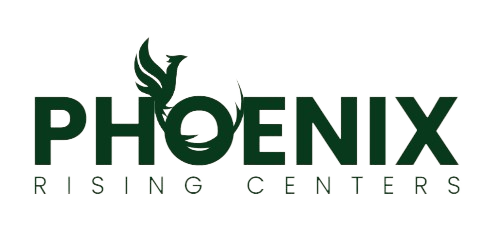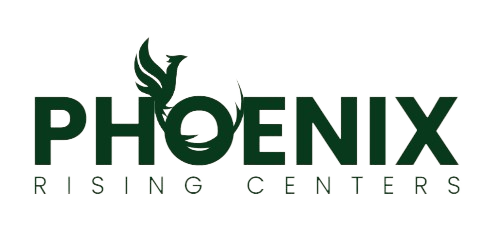7 Ways Community Can Boost Your Mental Health Services
In today's fast-paced world, mental health has emerged as a critical area of focus for individuals and communities alike. While professional mental health services are indispensable, the role of community in enhancing these services often goes unnoticed. This blog explores how fostering community connections can significantly benefit mental health services.
1. Building a Supportive Network
A sense of community offers a natural support network. When individuals are surrounded by empathic peers who understand their struggles, they feel less isolated and more encouraged to seek help. This support network is vital for mental health services, providing the social backing individuals often need. By participating in local group activities or joining community clubs, individuals find opportunities to connect with others who are willing to listen and share their own experiences. Stronger connections within these networks can be pivotal in encouraging someone to pursue therapy or attend a support group session.
Communities often thrive on the collective strength of individual stories and shared experiences. This can create a tapestry of empathy where members openly discuss their mental health journeys. Through interactions, members of the community learn valuable insights into each other’s lives. This, in turn, fosters a safer environment for continued dialogue about mental health. Resources such as community centers or local wellness programs can provide meeting spaces to nurture this network further.
2. Promoting Shared Experiences
Shared experiences can be cathartic and healing. Community activities and support groups offer spaces where individuals can share their stories, reducing the stigma associated with mental health challenges and fostering a sense of belonging. Whether it’s through storytelling sessions or casual meetups, these gatherings emphasize the importance of connection. Members often find solace in realizing their struggles are not unique, and others are facing similar battles. This acknowledgment can lead to a profound release of emotions, acting as a therapeutic outlet and a step towards healing.
Engaging in community events, such as art workshops or music therapy sessions, can be particularly beneficial. These settings encourage creative expression and provide a platform for people of all ages to explore their emotions. Such activities bring together diverse groups and can break down age-old barriers, enabling all participants to engage in an empathetic exchange of feelings and ideas.
3. Enhancing Accessibility to Resources
Communities can play a crucial role in making mental health resources more accessible. From community centers offering drop-in counseling sessions to peer-support initiatives, these local resources can complement professional services, reaching underserved populations. Many people find traditional mental health services intimidating or financially out of reach; community-driven solutions can bridge this gap by providing affordable and relatable support options.
Certain communities have developed excellent telehealth services that offer virtual consultations and emergency hotlines. These enable individuals in remote or isolated areas to access mental health support without needing to travel long distances. In doing so, communities not only expand the reach of mental health services but also empower individuals to seek help when and where they need it.
4. Encouraging Collaboration and Partnerships
By collaborating with local organizations, mental health services can expand their reach and effectiveness. Partnerships between community groups and mental health professionals ensure a holistic approach, addressing the diverse needs of the community. Community festivals, for example, can partner with mental health organizations to host talks or workshops, generating greater awareness and igniting conversations on mental health topics.
These collaborations allow for the exchange of expertise and sharing of resources that can enrich community programs. When local governments, educational institutions, and nonprofit organizations unite, they create layered support systems that reinforce mental health initiatives. This type of cohesive approach can transform traditional methods and lead to innovative solutions tailored to community-specific challenges.
5. Providing Preventive Education
Communities are in an excellent position to provide preventive education on mental health issues. Workshops, lectures, and public forums can demystify health topics, encouraging proactive wellness habits and early intervention. These educational efforts are crucial because they empower individuals to recognize early signs of mental distress.
Engaging local experts to host these events ensures that the content is both relevant and culturally sensitive. Prevention-based education can help reduce stigma surrounding mental health, encouraging more people to participate in conversations and interventions at the community level. Far from being passive observers, community members become active participants in their mental health journeys.
6. Fostering Empathy and Understanding
A community that fosters empathy and understanding creates an environment conducive to healing. By promoting mental health literacy and empathy-building activities, communities can cultivate a culture of support and acceptance. Empathy training workshops, which often combine role-playing and discussion exercises, teach individuals to better understand the emotions and perspectives of others.
Compassionate communities are equipped to respond to crises more effectively, as they can mobilize support swiftly. These communities often have designated mental health ambassadors who advocate for empathy-centric programs and ensure individuals receive tailored care. Facilitating open dialogues and practicing active listening is integral to nurturing an empathetic environment where everyone’s mental health is prioritized.
7. Driving Advocacy and Awareness
Communities have the power to drive advocacy and awareness campaigns that spotlight mental health issues. Through events, media, and outreach programs, they can influence policy changes and encourage societal shifts towards better mental health care. Meaningful advocacy begins at the grassroots level, where community voices can become a powerful force for change.
Utilizing social media and digital platforms enables communities to amplify their message, making it accessible to a global audience. Documenting and sharing success stories from around the world, communities inspire others to initiate similar programs. This collective awareness can spark regional or even national movements demanding improved mental health policies and reaching a broader spectrum of society.


